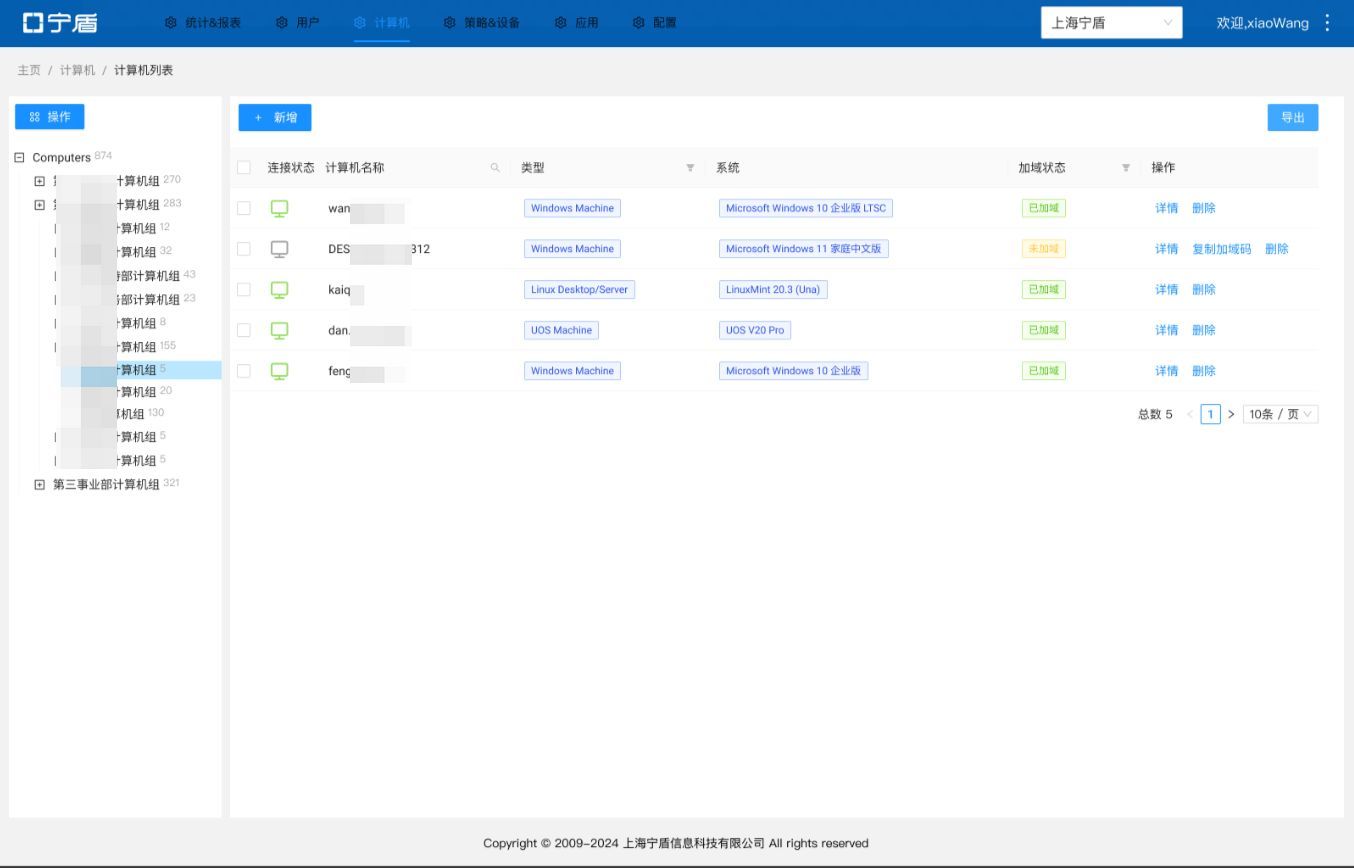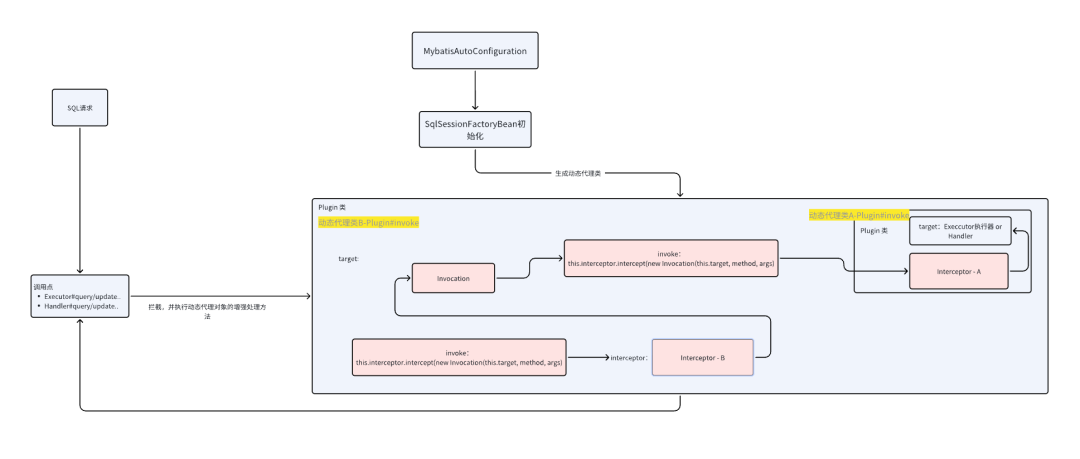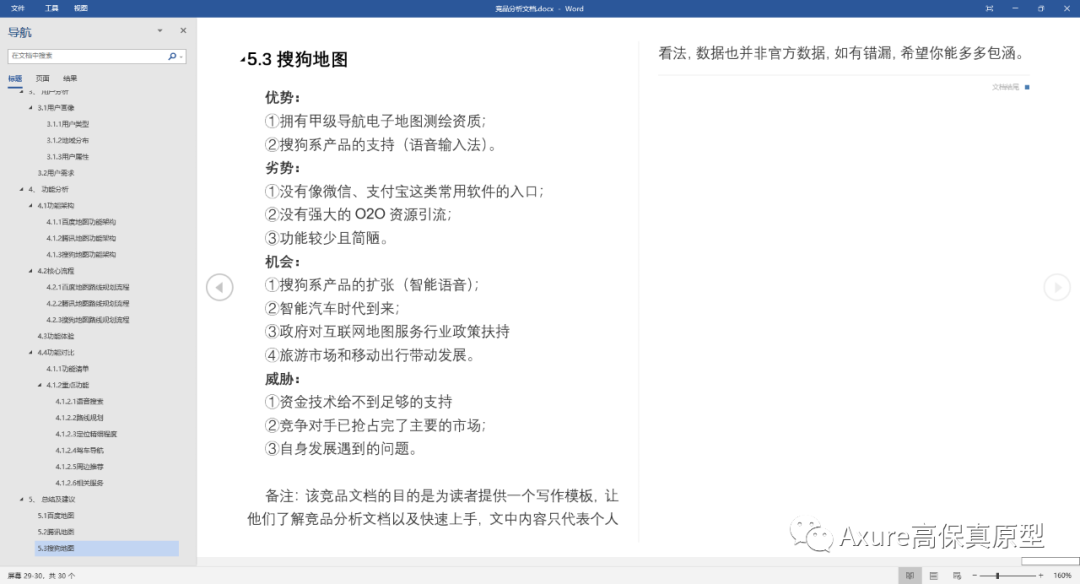数据库表操作
-
创建数据库语法格式
create table 表名( 字段名1 类型 约束, 字段名2 类型 约束, ..... ..... ) -
创建学生表,字段要求如下:
- 姓名(长度为10)、年龄、身高(保留2位小数)
create table students( id int unsigned primary key auto_increment, -- id字段为主键,且值自增 name varchar(20), -- name字段类型为字符串,长度为20 age int unsigned, -- age 字段类型为无符号的整数 height decimal(5,2) -- height字段类型为小数,小数位数为2 );

-
删除数据库表
drop table students; drop table if exists students;-- 注释说明,不是sql语句,不会被执行 -- 对语句的解释说明 -- 创建students 表 create table students( id int unsigned primary key auto_increment, name varchar(20), age int unsigned, height decimal(5,2) ); -- 删除数据集 -- 注释的快捷键 ctrl 加 / drop table students; drop table if exists students;
数据操作
简单查询
select * from 表名;
select * from students;
添加一行数据
-- 主键自增长,可以用0或null代替
insert into 表名 values(...)
insert into students values(0,'亚瑟',22,177.56);
insert into 表名(字段1,字段2,...)values(值1,值2,...)
insert into students(name) values('老夫子');
- 练习
-- 姓名(长度为10)、班级(长度为8)、科目(长度为56)、成绩(保留一位小数)
create table scores(
name varchar(10),
class varchar(8),
subject varchar(56),
score decimal(4,1)
);
-- 将刚才创建的成绩表删除
drop table scores;
-- 全部
insert into scores values('mike','24期','软测','59');
-- 部分
insert into scores(name) values("tom");
--查询
select * from scores;
数据更新操作
添加多行数据
-- 方式一:写多条insert语句,多条语句之间用英文分号分隔
insert into students(id,name)values(0,'张三');
insert into students(id,name)values(0,'李四');
insert into students values(0,'李四',20,180);
-- 方式二:通过一条insert 语句插入多条数据,数据间用逗号分隔
-- insert into 表名 values(...),(...)...
insert into students values(0,'亚瑟3',23,167.56),(0,'亚瑟4',23,167.56);
-- insert into 表名(字段名1,字段名2...) values(字段名1,字段名2...),(字段名1,字段名2...)...
insert into students(id,name) values(0,'小黑'),(0,'小蓝'),(null,'大白');
修改数据
-- update 表名 set 字段名1=值1,字段名2=值2,...where 条件
-- 修改id为5的数据,将名称设为狄仁杰,年龄设为22
UPDATE students set name='狄仁杰',age=22 where id =5;
注意:修改数据时一定要加条件,否则修改的是所有记录的值
删除数据
-- delete from 表名 where条件(物理删除对应的数据)
delete from students where id=6;
-
注意
- 此方法为物理删除,工作中大部分使用逻辑删除
- 逻辑删除是指通过设定一个字段来标识当前记录已经删除
- is_delete字段来标识,1代表删除,0表示未删除

其他删除数据的方式:
-- truncate table 表名(清除表里面的数据,但是表结构会保留,自增长字段的值会从1开始)
truncate table students;
--drop table 表名(删除数据表,包括数据和表结构)
drop table students;

数据库查询操作
数据准备
drop table if EXISTS students;
create table students(
studentNo VARCHAR(10) PRIMARY KEY,
name VARCHAR(10),
sex VARCHAR(1),
hometown VARCHAR(20),
age tinyint(4),
class VARCHAR(10),
card VARCHAR(20)
);
insert into students VALUES
('001','王昭君','女','北京','20','1班','340322199001247654'),
('002','诸葛亮','男','上海','18','2班','340322199102247125'),
('003','张飞','男','南京','24','3班','340322199201237547'),
('004','白起','男','安徽','22','4班','340322199301247584'),
('005','大乔','女','天津','19','3班','340322199401257659'),
('006','孙尚香','女','河北','18','1班','340322199501267344'),
('007','百里玄策','男','山西','20','2班','340322199607247884'),
('008','小乔','女','河南','15','3班',null),
('009','百里守约','男','湖南','21','1班','');
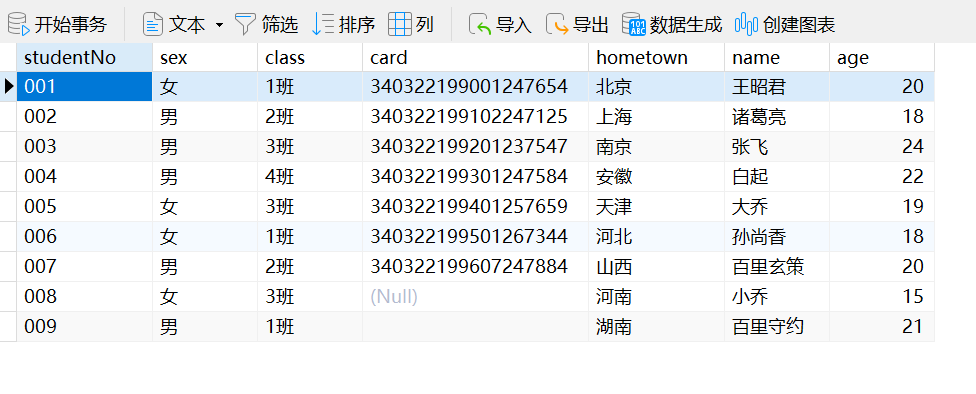
查询的基本操作
- 查询部分字段的值
-- select 字段1,字段2...from 表名(查询的为一部分的字段的信息)
-- 查询学生表中的姓名、性别、年龄的数据
select name,sex,age from students;
- 取别名
-- 给表取别名
-- select 别名.字段名1,别名.字段名2...from 表名 as 别名
-- 这个语法为后面关联查询做准备,现在只需要知道这个语法即可
select s.name,s.sex,s.age from students as s;
-- 给字段取别名
-- select 字段名1 as别名1,字段名2 as别名2...from 表名;
select name as 姓名,sex as 性别,age as 年龄 from students;
- 去重
-- select distinct 字段1,字段2...from 表名;
-- 根据学生的性别去重
select distinct sex from students;
条件查询
- 语法格式
select 字段1,字段2...from 表名 where 条件
select * from students where id=5
条件查询:比较运算符
- 比较运算符:大于(>)、等于(=)、小于(<)、大于等于(>=)、小于等于(<=)、不等于(<>或者!=)
-- 例1:查询小乔的年龄
select age from students where name='小乔';
-- 例2:查询20岁以下的学生
select * from students where age<20;
-- 例3:查询家乡不在北京的学生 !=之间不能有空格
select * from students where hometown !='北京';
-- 1、查询学号是'007'的学生身份证号
select card from students where studentNo='007';
-- 2、查询1班以外的学生信息
select * from students where class <> '1班';
-- 3、查询年龄大于20的学生姓名和性别
select name,sex from students where age>20;
条件查询:逻辑运算符
- 逻辑运算符:and(且,同时符合对应的条件),or(或,符合其中的一个条件),not(非,不符合该条件)
-- 查询年龄等于18的女生的记录(and)
select * from students where age=18 and sex='女';
-- 查询出女学生或者是1班的学生
select * from students where sex='女' or class='1班';
-- 查询非天津学生的记录
select * from students where hometown !='天津';
select * from students where not hometown ='天津';
-- 1、查询河南或河北的学生
select * from students where hometown ='河南'or hometown ='河北';
-- 2、查询2班的上海学生
select * from students where class='2班' and hometown ='上海'
-- 3、查询非20岁的学生
select * from students where not age =20;
select * from students where age !=20;
条件查询:模糊查询
-
模糊查询:like关键字
- %:匹配任意个字符
- _:匹配任意单个字符
- 一般like关键字只用来匹配字段类型为字符串的
-- 例1、查询姓'孙'的学生 select * from students where name like '孙%' -- 例2、查询姓'孙'且名字是一个字的学生 select * from students where name like '孙_'; -- 例3、查询名字以'乔'结尾的学生 select * from students where name like '%乔'; -- 例4、查询姓名中包含'白'的学生 select * from students where name like '%白%'; -- 1、查询姓名为两个字的学生 select * from students where name like '__'; -- 2、查询姓'百'且年龄大于20的学生 select * from students where name like '百%' and age>20; -- 3、查询学号以1结尾的学生 select * from students where studentNo like '%1';
条件查询:范围查询
- in :查询非连续范围内的数据
-- 查询家乡为北京或上海或广东的学生
select * from students where hometown in ('北京','上海','广东');
-- 相同实现方式
select * from students where hometown='北京' or hometown='上海' or hometown='广东';
- between…and:查询连续范围内的数据(用在数值型字段中)
-- 查询年龄在18到20之间的学生
select * from students where age between 18 and 20;
-- 相同实现方式
select * from students where age >=18 and age<=20;
-- 1、查询年龄为18或19或22的女生
select * from students where age in (18,19,20) and sex='女'
-- 2、查询年龄在20到25以外的学生
select * from students where age not between 18 and 25;
条件查询:为空判断
- null和 ’ '字符串不一样
- 空判断 is null
-- 查询出身份证号为空的信息
select * from students where card is null;
- 非空判断:is not null
-- 查询出身份证号不为空的信息
select * from students where card is not null;
排序
- 语法格式:
select * from 表名 order by 字段1 asc|desc,字段2 asc|desc...
- 字段的排序规则默认为升序排序(从小到大)
- asc:表示从小到大排序(升序)
- desc:表示从大到小排序(降序)
-- 例1:查询所有学生信息,按年龄从小到大排序
select * from students ORDER BY age;
-- 例2:查询所有学生信息,年龄按从大到小排序,年龄相同时,再按学号从小到大排序
select * from students ORDER BY age desc,studentNo;
-- 例3:查询所有学生信息,班级按从大到小排序,班级相同时,再按学号从小到大排序
select * from students ORDER BY class desc,studentNo;
分组和聚合
聚合函数介绍
- 使用聚合函数方便进行数据统计
- 聚合函数不能在where中使用
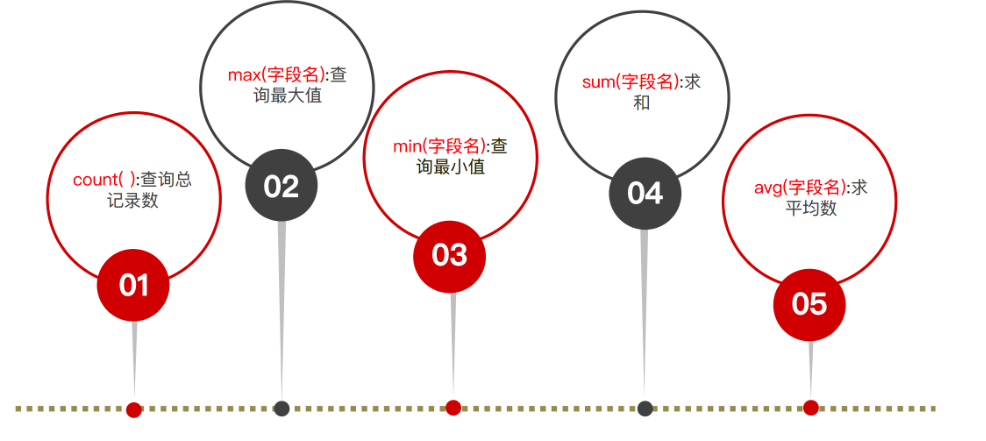
聚合函数案例
- count(*):求表的总的记录数
-- 查询学生表的总记录数
select count(*) from students;
- max(字段名):查询对应字段的最大的值
-- 查询女生的最大年龄
select max(age) from students where sex='女';
- min(字段名):查询对应字段的最小的值
-- 查询1班的最小年龄
select min(age) from students where class='1班';
- sum(字段名):查询对应字段的值的总和
-- 查询北京学生的年龄总和
select sum(age) from students where hometown='北京';
- avg(字段名):查询对应字段的值的平均数
-- 查询女生的平均年龄
select avg(age) from students where sex='女';
-- 1、查询所有学生的最大年龄、最小年龄、平均年龄
select max(age),min(age),avg(age) from students;
-- 2、一班共有多少个学生
select count(*) from students where class='1班';
-- 3、查询3班年龄小于18岁的同学有几个
select count(*) from students where class='3班' and age<18;
分组查询
-
分组的目的是对每一组的数据进行统计(使用聚合函数)
-
语法格式
select 字段1,字段2,聚合函数...from 表名 group by 字段1,字段2... -
例子
-- 查询各种性别的人数 select sex,count(*) from students group by sex; -- 查询各种性别年龄最大的 select sex,max(age) from students group by sex; -- 查询各个班级的人数 select class,count(*) from students group by class; -- 查询各个班级中不同性别的人数 select class,sex,count(*) from students group by class,sex;
-
-
分组后的数据筛选:
-
将分组之后的数据当成是一个表数据,然后再通过having条件来对当前的表数据进行筛选。
-
语法格式
select 字段1,字段2,聚合函数...from 表名 group by 字段1,字段2... having 条件- having条件 运算符跟where条件运算符是一样的
- having后面可以使用聚合函数
-
例子
-- 查询男生总人数 select count(*) from students where sex='男' select sex,count(*) from students GROUP BY sex HAVING sex='男' -- 查询每个班级男生的总记录数 select class,sex,count(*) from students GROUP BY class,sex having sex='男' -- 查询所有班级中不同性别的记录数大于1的信息 select class,sex,count(*) from students GROUP BY class,sex HAVING count(*)>11.where 是对from后面指定的表进行数据筛选,属于对原始数据的筛选
2.having 是对group by的结果进行筛选
3.having后面的条件中可以用聚合函数,where后面不可以
-
分页查询
-
语法格式
select * from limit start,count- start表示的是开始的记录,索引是从0开始。0表示第一条记录
- count 表示的是从start开始,查询多少条记录
-
例子
-- 查询前3行的学生信息 select * from students limit 0,3; select * from students limit 3; -
分页查询实现
select * from students limit (n-1)*m,m;- n表示的是页数
- n=1,2,3,4
- m表示的是每页显示的记录数
- m=3
- (n-1)*m,m是公式,并不是语法格式,不能直接写在SQL中,需要替换为具体的数字。
- n表示的是页数


